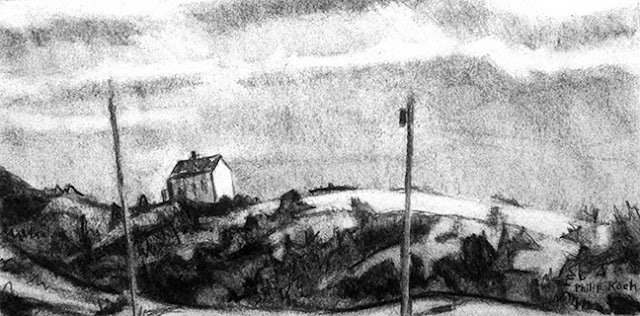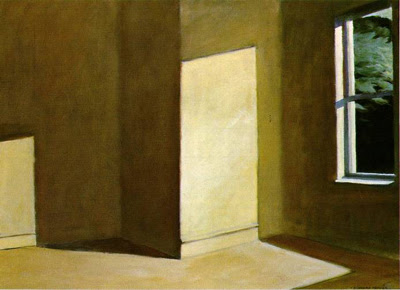The Three Roles of the Artist, Part One

Arnold Boecklin (Swiss, 1827-1901) Isle of the Dead
Got to thinking the other day about the different hats an artist must wear. You can boil it down to three:
- Explorer
- Magician-builder
- Curator
Art is a tool to help us make sense of our experiences out in the world. And it helps us to understand and come to peace in our inner lives. The above illustration is a painting that impressed me very much when I was a student at the Art Students League of New York. One of the five different versions the artist painted of it is in New York's Metropolitan Museum of Art.
Boecklin's painting is a chilly, although very beautiful, reminder that none of us has unlimited time. Our lives begin and then end. There's an imperative to make the most of the time we have. Artists, it seems to me, are charged with the mission to seek out the images and symbols they find out in the world that are the most meaningful. Boecklin uses his somber reflection on islands and stillness to produce this wonderful elegy in paint.
Artists start by putting more energy into exploring our surroundings with our eyes than most people do. In time, it pays off. We might for example discover a remarkable chord of colors looking at the shallow waters lapping above the sandy bottom of the ocean. We need to study it, look at from all possible angles, and see if this is a momentary fascination or whether there is something enduring and significant in what we've discovered. If there is, our job is to somehow pick the idea up, dust it off, and find a way to present our finding so others can see some of what we've seen and felt.
So much of an artist's training (endless hours of struggling to draw, mix just the right color, become a master of a certain kind of gradation, etc.) helps to open our mental doors wider. We train ourselves to see more than ordinary people. Trust me, it's hard work. It's also worth it.
Then there's a second side to our role as explorers. We have to turn our gaze inward as well.
I've always been struck by how emotional we humans are. I can recall sitting in a movie and being so moved by what I was seeing on the screen than my face became wet with tears. Then I looked around and realized everyone in the theater was crying softly along with me. . Who hasn't had this experience? We can't help but be responsive creatures
Artists have to sort through all the images they're so busy studying and storing in their imaginations. Always the question is "What have I seem that moved me the most? And then "How can I work with that image, or shape, or set of colors in a way that will move others?" Key to this whole undertaking is a finely honed selectivity. Probably ninety-nine percent of the things I enjoy looking at have to be rejected as not good enough. We need the sharpest of eyes, but just as much, a keen awareness of our emotions.
My own paintings draw heavily on my experiences as a young boy on the forested shore of Lake Ontario where I grew up. Those were days of exhilaration, delight, and also of some terrible sadness at times. I can't think of those times or feelings without sensing the deepness of that forest or the striking imagery of the wide expanse of the Great Lake's waters. Karl Jung said our psyche is composed of "feeling toned images." I make paintings employing those landscape images that resonate so deeply in my heart.


